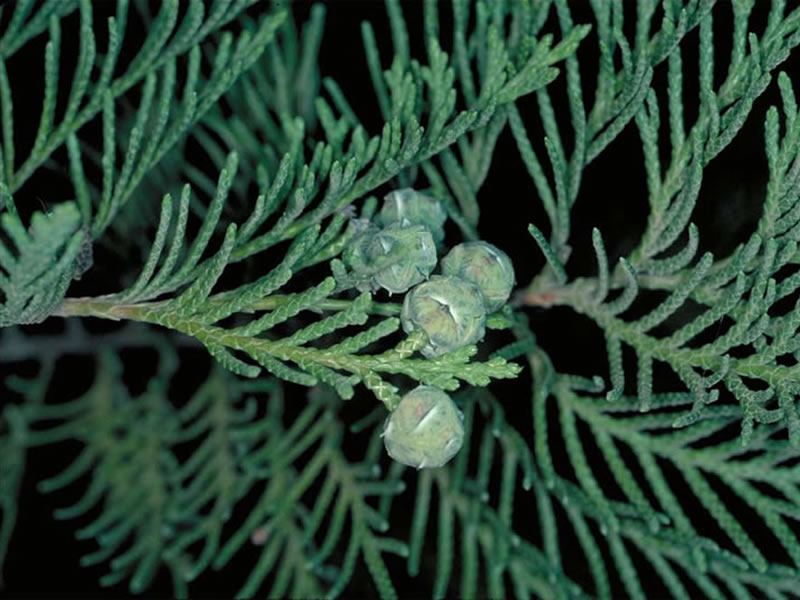Port-Orford-cedar Conservation
Port-Orford-cedar (Chamaecyparis lawsoniana) is an endemic to southwest Oregon and northwest California. It is one of the primary conifers associated with riparian areas and Darlingtonia wetlands in the serpentines of the Klamath-Siskiyou Mountains. Port-Orford-cedar plant communities include Port-Orford-cedar with hairy honeysuckle and Idaho fescue, Port Orford cedar with huckleberry oak and beargrass, and Port-Orford cedar with western azalea.
 Del Norte willow (Salix delnortensis) catkins. Photo by Norman Jensen, Photo·grafica botanii.
Del Norte willow (Salix delnortensis) catkins. Photo by Norman Jensen, Photo·grafica botanii.
Infection
In 1952, a root disease called Phytophthora lateralis was introduced into natural stands and has lead to significant mortality of this species throughout its range. There are but a few remaining sub-watersheds that are currently uninfected.
Phytophthora lateralis primarily spreads by spores in water coming into contact with the root system of Port-Orford-cedar. Once introduced into a stream system or other water body and root contact is made, the disease spreads rapidly.
Spores are transported in mud on vehicle tires, on the undercarriage of vehicles, boots, bikes, and other equipment from infected areas to uninfected areas. If visiting serpentine areas during the rainy season, please use the precautions described at the following link, under "What Can You Do?"
Read more about Port-Orford-cedar on the Six Rivers National Forest…




